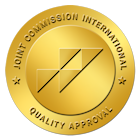When it comes to alcohol consumption, there are many questions you may have about how it affects your body. One of these questions likely is—how long does alcohol stay in your system? Understanding how long alcohol stays in your system is important for many reasons. You may want to know the duration of alcohol in your system for legal, health, and safety reasons.
At Crestview Recovery, we want to empower individuals with knowledge about the substances that they consume. In this blog, we will delve into alcohol metabolism, including the duration of its presence in blood, hair, and urine. Additionally, we will discuss factors affecting alcohol processing, how long it takes to feel its effects, system flushing methods, Blood Alcohol Concentration (BAC), signs of alcoholism, and options for alcohol addiction treatment.
How Long Does Alcohol Stay in Your Body?
Alcohol can be detected in different parts of the body for varying durations. The following includes where and for how long alcohol may be detected in the body:
Blood: In the bloodstream, alcohol can typically be detected for up to 12 hours after consumption, but this can be influenced by factors such as the amount consumed and individual metabolism.
Urine: In urine, alcohol can generally be detected for about 24 to 48 hours. However, for heavy drinkers, the detection window may extend beyond this timeframe.
Hair: When it comes to hair testing, alcohol use can be detected for up to 90 days. This is because as hair grows, it can retain a historical record of alcohol use, providing a longer detection window compared to blood or urine tests.
Systems in the body: Regarding the body’s systems, alcohol is primarily metabolized by the liver. On average, the liver processes approximately one standard drink per hour. However, this can vary based on factors such as age, gender, body weight, genetics, liver health, and tolerance levels.
 Knowing how long alcohol stays in your body may be useful to you for a variety of reasons. The presence of alcohol in the system can affect impairment and compliance with alcohol-related laws. It also impacts health and safety considerations, as consuming alcohol in close proximity to certain activities or medications can have adverse effects.
Knowing how long alcohol stays in your body may be useful to you for a variety of reasons. The presence of alcohol in the system can affect impairment and compliance with alcohol-related laws. It also impacts health and safety considerations, as consuming alcohol in close proximity to certain activities or medications can have adverse effects.
Additionally, knowledge of alcohol’s duration in the body helps make informed decisions regarding alcohol consumption, particularly in terms of timing and moderation. Understanding alcohol’s presence in the body assists in assessing the risks associated with driving, operating machinery, or engaging in activities that require mental alertness, ensuring personal safety and the safety of others.
It’s important to note that the presence of alcohol in the body does not necessarily equate to impairment. The effects of alcohol, such as intoxication and impairment, occur during the time when alcohol is actively circulating in the bloodstream.
How Does the Body Process Alcohol?
Alcohol is primarily metabolized by the liver. The process involves enzymes breaking it down into acetaldehyde, which is then further metabolized into acetic acid and eventually eliminated from the body.
Various factors can affect the rate of alcohol metabolism, including age, gender, body weight, genetics, liver health, and tolerance. Younger individuals and males generally metabolize alcohol more efficiently than older individuals and women. Furthermore, a history of heavy alcohol use can impact the body’s ability to process alcohol efficiently.
How Long Does it Take to Feel the Effects of Alcohol?
The time it takes to feel the effects of alcohol can vary from person to person. Factors such as body weight, metabolism, alcohol tolerance, and the rate of alcohol consumption can influence how quickly the effects are felt. On average, it takes around 30 minutes to 2 hours for alcohol to take effect. However, it is important to note that consuming alcohol on an empty stomach can lead to faster absorption and a quicker onset of effects.
How to Flush or Cleanse Your System
Contrary to popular belief, there are no foolproof methods to quickly eliminate alcohol from your system. The body naturally metabolizes and eliminates alcohol over time. Drinking water, exercising, or consuming certain foods will not expedite the process. The best way to ensure your system is free from alcohol is to allow sufficient time for it to be naturally processed and eliminated.
Similarly, there is no real way to “get sober fast”. Only time will reduce the effect of alcohol once it’s been consumed. Many of us have heard of various hangover cures that promise relief from the unpleasant aftermath of a night of heavy drinking. Remedies such as greasy food, sports drinks, coffee, and pain relievers may ease the discomfort of drinking but they will not help become sober quickly.
It’s important to recognize that these so-called cures may not actually work as effectively as we’d like. While they might provide temporary relief or placebo effects, they don’t address the root cause of a hangover—the toxic byproducts of alcohol metabolism. The only true remedy for a hangover is time and allowing your body to naturally process and eliminate the alcohol. Staying hydrated, getting rest, and consuming a balanced diet can support your recovery, but there is no magical cure-all. It’s best to drink responsibly and in moderation to minimize the chances of experiencing a hangover in the first place.
What is BAC?
Blood Alcohol Concentration (BAC) is a measure of the amount of alcohol in a person’s bloodstream. It is typically expressed as a percentage. The legal limit for driving in many jurisdictions is 0.08% BAC.
The time it takes to return to a BAC of 0 varies based on factors such as the amount of alcohol consumed, the rate of consumption, and individual metabolism. On average, it takes about one hour for the body to metabolize one standard drink and reduce BAC by approximately 0.015%.
It’s crucial to understand that popular tactics often employed to “sober up,” including cold showers, sleep, water intake, and caffeine consumption, do not effectively reduce blood alcohol concentration (BAC).
Signs of Alcoholism
Recognizing the signs of alcoholism is crucial for early intervention and seeking help. Signs may include:
- increased tolerance to alcohol
- cravings
- inability to control or stop drinking
- neglecting responsibilities
- withdrawal symptoms
- continued drinking despite negative consequences
- a preoccupation with alcohol
These signs indicate a problematic relationship with alcohol that may require professional assistance.
Treatment Options for Alcoholism

Crestview Recovery provides a full continuum of care so that you’ll be fully supported at every stage of your recovery from alcohol use disorder. Our team is well experienced in treating a range of substance use disorders and we create individualized plans to fit your needs when it comes to treating addiction. Our treatment options for alcoholism vary depending on individual needs and preferences. Some common approaches include:
Detoxification: Medically supervised detox helps individuals safely withdraw from alcohol and manage withdrawal symptoms.
Inpatient Rehabilitation: Residential treatment programs provide intensive therapy, counseling, and support in a structured environment, usually for a period of 30 to 90 days.
Outpatient Rehabilitation: These programs offer flexibility, allowing individuals to live at home while attending therapy sessions and support groups regularly.
Intensive Outpatient Treatment: This treatment offers a structured and comprehensive approach to addiction recovery with flexible scheduling, allowing individuals to live at home while receiving therapy and support.
Partial Hospitalization Program: Partial hospitalization provides a higher level of care than outpatient treatment, offering daily structured programs and support while allowing individuals to return home in the evenings.
Medication-Assisted Treatment: Medications such as naltrexone, acamprosate, and disulfiram may be prescribed to help reduce alcohol cravings, manage withdrawal symptoms, or create negative effects when alcohol is consumed.
Therapy and Counseling: Behavioral therapies like cognitive-behavioral therapy (CBT), motivational interviewing, and family therapy are commonly used to address underlying issues, change behaviors, and develop coping skills.
Support Groups: Programs such as Alcoholics Anonymous (AA) provide peer support, encouragement, and a structured 12-step approach to recovery.
Dual Diagnosis Treatment: For individuals with co-occurring mental health disorders, integrated treatment that addresses both alcoholism and underlying mental health conditions is essential.
It’s important to seek professional guidance to determine the most suitable treatment approach for individual circumstances. A comprehensive treatment plan often combines multiple strategies to address physical, psychological, and social aspects of alcohol addiction.
Get Help With Alcohol Addiction at Crestview Recovery!
If you or someone you know is struggling with alcohol addiction, seeking help is essential. Crestview Recovery offers comprehensive and personalized treatment programs to support individuals on their journey to recovery. We also offer gender-specific programs and welcome those in the LGBTQIA+ community to receive treatment at our facility. Our team is compassionate and supportive, creating a safe and comfortable environment for recovery.
With a focus on evidence-based therapies, individualized care plans, and a supportive environment, Crestview Recovery can provide the necessary tools and guidance to overcome alcohol addiction. Don’t hesitate–call us today and take the first step towards a healthier and happier life. Our alcohol rehab in Portland, Oregon can help you move beyond the need to abuse alcohol.
































